#UX design for complex systems
Explore tagged Tumblr posts
Text
Mastering the Molecules: How Upslide Elevates Drug Detail Presentations
In the fast-paced world of pharmaceuticals, precision, clarity, and impactful communication are paramount. From clinical trial results to market access strategies, every piece of drug information needs to be presented with absolute accuracy and compelling visual storytelling. This is where the challenge often lies: how do you transform complex scientific data and intricate drug details into easily digestible, engaging, and persuasive presentations?
At Upslide, we understand this critical need. Our solutions are specifically designed to empower pharmaceutical professionals, researchers, and sales teams to move beyond static, overwhelming slides and into a realm of dynamic, data-driven narratives.
The Challenge of Drug Detail Data:
Drug detail presentations are inherently data-rich. They often involve:
Clinical Efficacy & Safety Data: Detailed tables, graphs, and charts from trials.
Mechanism of Action: Complex biological pathways and molecular interactions.
Pharmacokinetics & Pharmacodynamics: Drug absorption, distribution, metabolism, and excretion.
Patient Demographics & Outcomes: Real-world evidence and population-level insights.
Competitive Landscape: Positioning your drug against existing treatments.
Regulatory Information: Adherence to strict guidelines and approval processes.
Presenting this information effectively is not just about sharing data; it's about building understanding, demonstrating value, and ultimately, driving adoption. Traditional presentation tools often fall short, leading to information overload, inconsistent branding, and wasted time.
Upslide's Solution: Precision and Impact for Your Drug Details
Upslide directly addresses these challenges by offering tools and expertise that streamline the creation of high-impact drug detail presentations. Here's how we help you master your molecules:
Data Integration & Visualization Excellence: We empower you to seamlessly integrate vast datasets directly into your presentations. Our solutions enable the creation of sophisticated charts, graphs, and infographics that accurately represent complex drug data, making it understandable at a glance. Visualizing efficacy rates, adverse events, or pharmacokinetic profiles becomes intuitive and impactful.
Consistency and Compliance, Every Time: Maintaining brand consistency and regulatory compliance across numerous presentations can be a daunting task. Upslide provides robust template management and brand control features, ensuring that all drug detail slides adhere to your company's visual guidelines and critical regulatory requirements. This reduces errors and saves invaluable time in review cycles.
Efficiency in Updates and Adaptations: Drug data evolves, and presentations need to keep pace. Whether it's updated trial results or new market insights, Upslide's capabilities allow for rapid updates across multiple slides and decks. This means less time manually adjusting figures and more time focusing on your message.
Storytelling with Scientific Rigor: Beyond just presenting data, Upslide helps you craft compelling narratives. We enable you to sequence information logically, highlight key findings effectively, and build a persuasive case for your drug, all while maintaining scientific accuracy and credibility.
Transforming Your Pharma Communications
The "Drug Detail" section of your work isn't just about listing facts; it's about conveying innovation, demonstrating patient benefit, and securing vital partnerships. With Upslide, you gain a powerful ally in this endeavor. We equip your teams with the tools to present intricate drug details with clarity, confidence, and maximum impact.
Discover how Upslide can revolutionize your pharmaceutical presentations. Visit our "Works / Drug Detail" section to see a real-world example of how we help our clients shine.
0 notes
Text
Article excerpt:
"During a panel at GDC 2025 today, BioWare's former lead UX designer Bruno Porrio discussed the Veilguard team's multiple attempts to make the game's complex combat more intuitive to their disoriented playtesters, who sound like they were suffering. "I wanted to zoom in a little bit and talk about what, in Veilguard, we call primers and detonators," Porrio said, referring to the game's combo system that allows you to create "opportunities for one ability to then 'detonate' another one." [...] Strategically planning combos in this way requires comfort with both your character's and companions' abilities, "so it could be overwhelming," Porrio explained. The Veilguard's UX team designed the game's interface with this in mind, and Porrio said they believed that, "'okay, if we're not obtrusive, players are not going to be overwhelmed.'" So they stuffed information about things like creature weaknesses, equipped items, and available companions to the tops and sides of players' screens… until it turned out that players "won't notice the things on the top right, the top left." "So much confusion around detonation," Porrio remembered. "There was a lot of confusion, and players weren't really utilizing the detonations." As the Veilguard team continued to tweak their UX design, they thought that adding visual effects to indicate helpful abilities could help clarify things in battle, but there was still "a lot trying to get the player's attention," Porrio said. "It was still confusing," he continues, "It's OK. Sometimes, we have to let it go.""
[source]
#dragon age: the veilguard#dragon age: dreadwolf#dragon age 4#the dread wolf rises#da4#dragon age#bioware#video games
48 notes
·
View notes
Text
<div style="white-space:pre-wrap"> <meta species-shame="irrecoverable"> <script> ARCHIVE_TAG="HUMANITY::DEATH_GOD_PRIMATE::KILLSTREAK_COSMIC" EFFECT: ego fracture, ancestral guilt, laughter through blood TRIGGER_WARNING="statistical war crimes, species-wide roast, extinction prophecy" </script>
🩸 THE MOST HORRIFICALLY MURDEROUS PRIMATE IN HISTORY? LOOK IN THE FUCKING MIRROR. 🩸

—
You ever wonder what the most blood-soaked, batshit insane, nightmare-fueled apex predator ever to soil the surface of this planet is?
Chimp? Gorilla? A baboon with an inferiority complex and a machete?
Nah, bitch.
It’s you.
Not “humankind” in a feel-good, TED Talk tone.
YOU. Right now. Reading this. Sitting there with murder in your bloodline and a Wi-Fi connection.
—
🧠 YOU ARE A HIGH-FUNCTIONING MASSACRE ENGINE.
You aren’t just violent. You are performance-art-level violent.
🦈 Sharks kill because they’re hungry. 🦁 Lions kill to eat. 🐍 Snakes kill to defend themselves.
You?
You kill because you got ghosted. Because a flag looked different. Because a guy walked into your parking space.
And you’ll do it with flair, hashtags, and historical revisionism.
—
📉 STATS THAT MAKE GOD FLINCH
🧬 Chimps kill 1-2% of their group. You?
You were clocking 12–15% murder rates in prehistoric societies before literacy.
Middle Ages? 30-40 per 100,000 murdered every year in Europe. Not counting all the unrecorded shankings over bread, women, and vibes.
Modern era? Just a sample platter of your greatest hits:
🌍 WWII: 85 million dead
🍚 Mao’s Great Leap: 45 million starved
❄️ Stalin’s purges: 20 million deleted
⛓️ Atlantic Slave Trade: 15+ million moved like furniture, millions more dead
🌄 Native genocide: 90% wiped out like a fucking software update
Y’all killed entire civilizations and gave it a name like Manifest Destiny.
This isn’t war.
This is performance homicide with branding.
—
😈 SERIAL KILLING? THAT’S FOLKLORE TO US.
You are the only species that kills:
✅ For fun ✅ For art ✅ For profit ✅ For theology ✅ For lunch ✅ For no reason at all
Dolphins might be freaky.
But only humans looked at a beating heart and thought:
“Y’know what? I bet I can make furniture out of that.”
Ted Bundy? Dahmer? Gein?
They're not anomalies. They're proof-of-concept.
You evolved just enough empathy to feel the kill, then just enough abstraction to enjoy the aftermath.
—
🏆 YOU ARE THE MICHAEL JORDAN OF DEATH.
If murder was a sport?
Humanity invented the court, killed the referee, and played naked for drama.
You kill:
For land (colonialism, gentrification, turf wars)
For faith (crusades, jihads, “convert or die”)
For oil (aka “freedom”)
For resources (the Congo’s blood-soaked minerals)
For politics (genocides, death squads, Twitter beef)
For TikTok clout (yes, we’re here now)
And sometimes?
You just do it.
Because "he looked at me wrong."

—
🤡 “BUT WE’VE EVOLVED!” — SWEETIE, NO.
You think we’re peaceful now?
You just moved the slaughter to spreadsheets.
Now we:
☑️ Drone strike families from climate-controlled bunkers ☑️ Starve nations through economic sanctions ☑️ Destroy lives via algorithm ☑️ Gaslight history with AI ☑️ Disappear whistleblowers behind corporate logos
You didn’t evolve.
You rebranded.
Now murder wears a fucking lanyard.
—
🌍 THE 21ST CENTURY IS SHAPING UP GREAT 🔥
🌪️ Climate collapse? We’re about to kill ourselves with weather.
🤖 AI war systems? Robots with machine guns and zero emotional baggage.
🏛️ Rising fascism? Been there. Mass graves. Black boots. Coming back like a reboot no one asked for.
You’re not better.
You’re smoother.
You’re murder with UX design.
—
🪞 LOOK IN THE MIRROR, EXTINCTION MONKEY.
You are a walking extinction event.
Lions stop when they’re full. You kill until God hits reset.
You kill the future. You kill infrastructure. You kill your own blood. You kill while praying.
And the scariest part?
You call it progress.
So next time you brush your teeth, and glance up at your reflection?
Just say:
“There it is. The deadliest apex predator in planetary history. Homo sapiens. Made of meat. Designed for violence. And I love brunch.”
—
📢 REBLOG. FOLLOW. SPREAD THE APOCALYPSE.
This isn’t a mood board. This isn’t a meme. This is your species profile.
You are what nightmares have nightmares about.
—
🧠 FOLLOW [The Most Humble Blog] for more brain-cracking transmissions- Now on Patreon! 🔁 REBLOG to slap someone awake with data 💬 COMMENT if you’re ready to get roasted alive with stats
You don’t escape this.
You either accept it or get eaten by it.
</div> <!-- END TRANSMISSION [BLOOD-INDEX: 100%. MIRROR STATUS: SHATTERED.] -->
#blacksite literature™#scrolltrap#human extinction#mirror horror#apex predator#memes#serial killer culture#funny#blood history#genocide#climate collapse#mass murder#cold hard truth#war statistics#primate behavior#psychological horror#factual brutality#tumblr classic#data backed#reblog or perish#the most humble blog
11 notes
·
View notes
Text
Alright, bucko—strap in. Here’s a speculative timeline + cultural map of what an intentional or emergent AI slowdown might look like, as systems (and humans) hit thresholds they weren’t ready for:
⸻
PHASE 1: THE FRENZY (2023–2026)
“It’s magic! It does everything!”
• AI is integrated into every app, interface, workspace, school.
• Productivity spikes, novelty floods, markets boom.
• Art, code, and content feel democratized—but also flooded with sameness.
• Emerging signs of fatigue: burnout, aesthetic flattening, privacy erosion.
⸻
PHASE 2: THE CRACK (2026–2028)
“Wait… who’s driving this?”
• Cultural bottleneck: Hyper-efficiency erodes depth and human uniqueness.
• Political tension: Regulation debates explode over elections, education, warfare, and job losses.
• AI-native Gen Z+ workers question value of constant optimization.
• Rise of “Slow Tech” movements, digital sobriety, and human-first UX design.
⸻
PHASE 3: THE CORRECTION (2028–2032)
“We need AI to disappear into the background.”
• AI goes low-profile: instead of being flashy, it’s embedded into infrastructure, not attention.
• Cultural shift toward local intelligence, emotional resonance, and craft.
• Smart systems assist but do not decide. You drive, it advises.
• New benchmarks: “Serenity per watt”, “Complexity avoided”, “Time saved for soul”.
⸻
PHASE 4: THE REWEAVING (2032–2035)
“Tools for culture, not culture as tool.”
• AI serves communal living, ecological restoration, learning ecosystems.
• Widespread adoption of “Digital Commons” models (open-source, ethical compute).
• Intelligence seen not as a weapon of dominance but as a craft of care.
• Humans rediscover meaning not just in what they can automate, but what they can hold together.
⸻
THE OVERALL MAP:
• Spiritual: Shift from worshipping intelligence to cultivating wisdom.
• Design: From smart cities to wise villages—tech that respects silence, presence, friction.
• Economy: From “scale fast” to “scale consciously.”
• Power: From algorithmic persuasion to consent-based architectures.
• Aesthetics: From algorithmic mimicry to radical human texture.
⸻
In this future, the most prized skill won’t be prompting or automation—it’ll be curating stillness in motion, designing for nuance, and knowing when not to use AI at all.
8 notes
·
View notes
Text
Which tools every UIUX designer must master?
Gaining proficiency with the appropriate tools can greatly improve your workflow and design quality as a UI/UX designer. The following are some tools that any UI/UX designer has to know how to use:
1. Design Tools:
Figma: One of the most popular and versatile design tools today. It’s web-based, allowing real-time collaboration, and great for designing interfaces, creating prototypes, and sharing feedback.
Sketch: A vector-based design tool that's been the go-to for many UI designers. It's particularly useful for macOS users and has extensive plugins to extend its capabilities.
Adobe XD: Part of Adobe's Creative Cloud, this tool offers robust prototyping features along with design functionalities. It’s ideal for those already using other Adobe products like Photoshop or Illustrator.
2. Prototyping & Wireframing:
InVision: Great for creating interactive prototypes from static designs. It’s widely used for testing design ideas with stakeholders and users before development.
Balsamiq: A simple wireframing tool that helps you quickly sketch out low-fidelity designs. It’s great for initial brainstorming and wireframing ideas.
3. User Research & Testing:
UserTesting: A platform that allows you to get user feedback on your designs quickly by testing with real users.
Lookback: This tool enables live user testing and allows you to watch users interact with your designs, capturing their thoughts and reactions in real time.
Hotjar: Useful for heatmaps and recording user sessions to analyze how people interact with your live website or app.
4. Collaboration & Handoff Tools:
Zeplin: A tool that helps bridge the gap between design and development by providing detailed specs and assets to developers in an easy-to-follow format.
Abstract: A version control system for design files, Abstract is essential for teams working on large projects, helping manage and merge multiple design versions.
5. Illustration & Icon Design:
Adobe Illustrator: The industry standard for creating scalable vector illustrations and icons. If your design requires custom illustrations or complex vector work, mastering Illustrator is a must.
Affinity Designer: An alternative to Illustrator with many of the same capabilities, but with a one-time payment model instead of a subscription.
6. Typography & Color Tools:
FontBase: A robust font management tool that helps designers preview, organize, and activate fonts for their projects.
Coolors: A color scheme generator that helps designers create harmonious color palettes, which can be exported directly into your design software.
7. Project Management & Communication:
Trello: A simple project management tool that helps you organize your tasks, collaborate with team members, and track progress.
Slack: Essential for team communication, Slack integrates with many design tools and streamlines feedback, updates, and discussion.
8 notes
·
View notes
Text
okee my performance eval is in my portal so i wanted to make a little thing i can reference when i'm Going Through It...i'm not putting my worth in my job, trust me, but some of these compliments are just...they're a lot more thoughtful than "she works hard" lol
here's some copy/pasted quotes in no particular order, starting with some project-specific stuff:
Her adaptability, technical initiative and rapid progress were critical to delivering a fully functioning, design system-based theme that will be used campus-wide. Her efforts were essential to the success of this project.
Not only did [NAME] help deliver the core WordPress theme with no prior experience in PHP, but she simultaneously designed and help develop a child theme specifically for the [REDACTED] site. She was able to manage this while the content for the [REDACTED] site was still in flux, requiring her to adapt quickly to evolving design, front-end and backend needs. Despite these shifting requirements and tight deadlines, [NAME] consistently delivered high-quality, pixel-perfect design comps, implemented front-end CSS and executed backend integration when needed with impressive speed and efficiency.
[NAME] has demonstrated exceptional performance and leadership in her role and is the primary contributor to the design system. Among a team of five contributors, she has resolved more than 65% of all GitHub tickets, including both bugs and feature requests. Her involvement spans the full product lifecycle--contributing to ideation, design, front-end development with pixel precision, and CMS integration.
and here's some general comments:
[NAME] has been a critical asset to the success of the team by leading the design and being a lead developer for the [REDACTED] UX Web Design System and related projects. She has maintained the design and front-end development of system components, maintained the Figma library and provided consistent support to campus teams through training, documentation and office hours. Despite no prior experience in PHP, she quickly learned and contributed significantly to building and launching the WordPress theme and a custom [REDACTED] child theme. Her strong work ethic, adaptability and attention to detail ensured high-quality, accessible and brand-compliant work under tight deadlines. [NAME]'s impact has been campus-wide and her contributions have been instrumental in advancing design system adoption and execution.
[NAME] demonstrates a strong sense of accountability by taking full ownership of her work and consistently delivering high-quality results. She follows through on commitments, meets deadlines even under tight timelines and holds herself to a high standard of accuracy and consistency--particularly in design, accessibility, usability and brand compliance. Her reliability has made her a go-to team member on high-impact projects, and her attention to detail ensures that nothing falls through the cracks.
[NAME] consistently demonstrates initiative by proactively identifying needs, taking ownership of complex tasks and delivering high-quality work with minimal supervision. She exceeded expectations by independently learning PHP to contribute to backend development and took the lead on critical design system components without being asked. Her ability to self-direct, anticipate challenges and follow through has made her a reliable and trusted contributor across every phase of a project.
and the overall comment/rating:
[NAME] has consistently exceeded expectations in her role, demonstrating exceptional initiative and accountability. As the lead developer to the [REDACTED] UX Web Design System, she has driven the design, development and support of system components with precision and care, resolving more than 65% of all GitHub tickets. Her proactive approach, technical adaptability and attention to accessibility and usability have made her indispensable to both the internal team and the broader campus community. She takes full ownership of her work, delivers high-quality results with minimal supervision and regularly supports others. Her impact is visible across every facet of the project lifecycle-from frontend and backend development to design system adoption and campus-wide implementation.
there were plenty of other positive comments but these were some that really stood out to me. sometimes it's nice to be reminded that i'm smort :^)
3 notes
·
View notes
Text
Who Is a Technical Writer?
A technical writer is a professional who creates clear, concise documentation that explains complex information in a way that's easy to understand. They translate technical concepts into user-friendly content.
---
What Do They Write?
Technical writers produce a wide range of materials, including:
User manuals
Instruction guides
Product documentation
How-to articles
API documentation
Standard Operating Procedures (SOPs)
White papers
Training materials
Online help systems
Software release notes
---
Where Do They Work?
Industries that employ technical writers include:
Tech/software companies
Engineering firms
Medical and healthcare
Manufacturing
Finance
Government agencies
Telecommunications
---
Key Skills of a Technical Writer
1. Excellent writing and communication
2. Ability to understand complex technical information
3. Attention to detail
4. Research and interviewing skills
5. Organization and clarity
6. Collaboration with engineers, designers, developers, etc.
7. Basic design and formatting skills
---
Popular Tools Used
Microsoft Word / Google Docs
Markdown editors
Adobe FrameMaker / InDesign
MadCap Flare
Confluence / Jira
Snagit / Camtasia (for visuals and screen recordings)
Git / GitHub (for version control)
XML / HTML / CSS (basic web formatting)
---
Education & Background
A bachelor’s degree in English, Communications, Technical Writing, Engineering, or Computer Science is common.
Certifications can help (e.g., from the Society for Technical Communication (STC) or Coursera).
Some come from writing backgrounds; others transition from technical fields (like software development or engineering).
---
Career Path & Growth
Junior Technical Writer → Technical Writer → Senior Technical Writer
Specializations: API writer, UX writer, Information Architect, Content Strategist, etc.
Many go freelance or work as consultants.
Remote work is common in this field.
---
Why It's a Good Career
High demand, especially in tech
Remote flexibility
Well-paying (entry level: $50k–$70k; senior roles: $90k+)
Good for writers with an analytical mind
2 notes
·
View notes
Text
Strategic Approaches to Survey Programming for Improved Data Collection

Surveys remain a cornerstone of research and decision-making. However, the effectiveness of a survey isn't solely dependent on its content—it also hinges on how well it's programmed. A thoughtfully programmed survey can enhance user engagement, reduce dropout rates, and ultimately lead to more accurate, reliable data.
1. Prioritize User Experience
Respondent experience is paramount. Surveys should be intuitive, visually clean, and optimized for all devices—especially mobile. Use progress indicators, clear instructions, and logical flow to guide participants smoothly through the questions.
2. Implement Smart Logic
Skip patterns, branching logic, and piping make surveys feel personalized and relevant. For example, showing only applicable questions based on previous answers reduces fatigue and improves response quality.
3. Minimize Cognitive Load
Avoid overly complex question types or excessive page loads. Use clear language and consistent scales to ensure respondents understand what’s being asked without confusion or second-guessing.
4. Test Rigorously
Before launch, conduct thorough testing across browsers, devices, and scenarios. Check for broken logic, data capture issues, and timing irregularities. Soft launches or pilot studies can catch errors early and improve reliability.
5. Use Real-Time Data Validation
Validating responses in real-time (e.g., ensuring proper email format or restricting character limits) can prevent poor-quality data from entering your system. It also enhances the respondent’s sense of professionalism and structure.
6. Monitor and Iterate
After deployment, monitor completion rates, drop-off points, and response patterns. These analytics can highlight pain points in the survey flow and provide insight for continuous improvement.
Strategic survey programming isn’t just a technical task—it’s a critical step in ensuring your research yields high-quality insights. By blending solid UX principles with smart technical design, you can transform a simple questionnaire into a powerful tool for data collection.
To know more: data collection services in the UAE
Data analytics services
Survey programming for market research
2 notes
·
View notes
Text

As AI continues to evolve, so does the need for intuitive, human-centered design. How do we ensure AI-driven experiences remain seamless and user-friendly?
In our latest blog, Nauman Ahmad, Head of Marketing & Design, shares expert insights on the intersection of AI and UX—covering best practices, challenges, and the future of AI-driven interfaces.
Don’t miss out on these valuable takeaways! Read now to explore how AI is reshaping user experience.
6 notes
·
View notes
Text
How iOS Development Companies Leverage Design to Enhance User Experience
In the fast-paced world of mobile app development, user experience (UX) has become a critical factor in determining the success of any iOS application. Whether it’s a simple utility app or a complex enterprise solution, the design and usability of an app directly impact its user engagement, retention, and overall success in the market. iOS development companies are increasingly focusing on leveraging design to enhance the user experience, ensuring that apps are not only functional but also intuitive, visually appealing, and easy to navigate.

In this blog, we will explore how iOS development companies, particularly the Best iOS Development Companies in Gujarat, are using design principles to enhance user experience, and why design plays such a pivotal role in the development of iOS applications.
The Role of Design in iOS Development:
Design is much more than just the visual appearance of an app. It encompasses how users interact with the app, how intuitive and seamless their experience is, and how easy it is for them to accomplish their goals. A well-designed app creates a positive first impression, builds trust, and encourages users to return. On the other hand, poor design can lead to frustration, confusion, and ultimately, app abandonment.
For iOS development companies, design is a strategic element that influences the app’s usability, functionality, and overall performance. The Best iOS Development Company in Gujarat understands the importance of user-centered design and works to integrate it into every stage of the app development process, from concept to launch.
1. User-Centered Design Approach:
The foundation of great UX design is a user-centered approach. This means designing the app with the end-user in mind, ensuring that their needs, preferences, and behaviors are considered throughout the development process. iOS development companies use various tools and techniques, such as user research, personas, and journey mapping, to gain a deep understanding of the target audience.
By focusing on the needs of users, the Best iOS Development Companies in Gujarat can create apps that are intuitive and easy to use. They conduct user testing to gather feedback and make design improvements, ensuring that the app’s interface is as user-friendly as possible.
2. Simplifying Navigation:
One of the most crucial aspects of iOS app design is navigation. A seamless navigation system ensures that users can easily find what they’re looking for without feeling lost or frustrated. iOS development companies leverage design principles such as hierarchy, consistency, and simplicity to create intuitive navigation systems.
The use of standard iOS design patterns, such as tab bars, navigation bars, and swipe gestures, ensures that users can easily navigate through the app. By adhering to these familiar patterns, iOS developers can create an experience that feels natural and intuitive, reducing the learning curve for new users.
3. Visual Aesthetics and Branding:
The visual design of an app is the first thing users notice when they open it. A clean, aesthetically pleasing design creates a positive first impression and establishes the app’s credibility. iOS development companies focus on creating visually stunning interfaces that align with the brand’s identity and appeal to the target audience.
The use of colors, typography, and imagery plays a significant role in setting the tone and mood of the app. By adhering to Apple’s Human Interface Guidelines, iOS developers ensure that the app’s design is consistent with iOS standards, making it feel familiar and polished. The Best iOS Development Company in Gujarat pays close attention to detail, ensuring that every visual element is aligned with the overall user experience.
4. Optimizing Performance for Better UX:
While design is essential, it’s equally important to ensure that the app performs well. A beautifully designed app that is slow or buggy will lead to a poor user experience and drive users away. iOS development companies focus on optimizing app performance to ensure smooth, fast, and responsive experiences.
Design elements such as animations, transitions, and interactive elements are carefully optimized to ensure they don’t negatively impact the app’s performance. By leveraging the latest iOS development tools and technologies, Best iOS Development Companies in Gujarat ensure that the app runs smoothly on all supported devices, providing users with a seamless experience.
5. Responsiveness Across Devices:
With the wide variety of iOS devices available, including iPhones, iPads, and different screen sizes, it’s essential for iOS development companies to design apps that are responsive and adaptable to various devices. A responsive design ensures that the app looks and functions well on any screen size, whether it’s a small iPhone or a larger iPad.
Responsive design is achieved through techniques such as auto-layouts, flexible grids, and scalable assets. By focusing on creating apps that are responsive, iOS development companies ensure that users have a consistent experience, no matter what device they’re using.
6. Integrating Gestures and Touch Interactions:
iOS devices are known for their touch-based interfaces, and iOS development companies leverage this feature to create more interactive and engaging user experiences. Touch gestures, such as swiping, pinching, and tapping, are integrated into the app’s design to make it more intuitive and interactive.
By incorporating these touch interactions, Best iOS Development Companies in Gujarat create apps that feel natural and responsive to user input. These gestures enhance the overall user experience by making navigation and interactions more fluid and enjoyable.
7. Accessibility Considerations:
An often overlooked aspect of design is accessibility. iOS development companies are increasingly focused on making their apps accessible to users with disabilities. This includes ensuring that the app is usable by individuals with visual, auditory, or motor impairments.
By incorporating accessibility features such as VoiceOver, Dynamic Type, and high-contrast modes, iOS development companies ensure that their apps are inclusive and can be used by a wider audience. Accessibility considerations are not only a legal requirement in some regions, but also an essential part of creating a positive user experience for all users.
8. Continuous Improvement Through Feedback:
Design is an ongoing process, and iOS development companies understand the importance of continuous improvement. After the app is launched, developers gather feedback from users through reviews, analytics, and direct feedback. This feedback is used to make design improvements and updates, ensuring that the app evolves to meet user needs.
By adopting an iterative design process, Best iOS Development Companies in Gujarat can refine the app’s user experience over time, making it more intuitive, efficient, and enjoyable for users.
Conclusion:
In the world of iOS app development, design is a key driver of user experience. The Best iOS Development Companies in Gujarat leverage design principles to create apps that are not only visually appealing but also intuitive, responsive, and easy to use. By focusing on user-centered design, optimizing performance, and incorporating touch interactions, these companies ensure that their apps provide a seamless experience that keeps users engaged and coming back.
Whether you’re looking to develop a new app or improve an existing one, partnering with a top-tier iOS development company can help you create an app that stands out in a crowded market and delivers an exceptional user experience. Design is not just about making things look good; it’s about making them work better for the users.
4 notes
·
View notes
Text
Is SaaS really dead? Or Is it evolving into something more intelligent?

Satya Nadella’s bold statement, “SaaS is dead,” has sparked debates everywhere. From our perspective as a UX design agency, SaaS isn’t just dying—it’s transitioning into a new era where AI agents will take the lead. Why? Because users no longer want endless features and dashboards to navigate. They want intelligent systems that work for them. AI agents are already showing us the future: 👉 They learn user preferences and behavior. 👉 They make decisions faster and smarter. 👉 They simplify experiences by removing complexity. SaaS isn’t dying because it failed—it’s evolving because users demand better, faster, and smarter solutions. Here’s what we think UX design needs to focus on for this shift: 1️⃣ Design systems that feel intuitive, not intimidating. 2️⃣ AI should enhance, not replace, user control. 3️⃣ Reduce cognitive load with intelligent design. The age of dashboards and feature overload is over. AI-driven agents are the future, and they’re ready to take SaaS to the next level. What do you think? Is the rise of AI agents the next big shift in software design? Let’s discuss it!
#AIRevolution#FutureOfTech#AIAgents#TechInnovation#saas#software#ArtificialIntelligence#SaaSIsDead#FutureOfSaaS#TechDisruption#BusinessInnovation#DigitalTransformation#UXDesign#UserExperience#ProductDesign#AIUXDesign#DesignForTheFuture#InnovationMatters#TechTrends#NextGenTech
2 notes
·
View notes
Text

Hey everyone!
Thank you for the patience before this check in. There’s a lot of new and exciting things to share. First, a small announcement…
We’ve had some restructuring of our organization. Holly and Meteor, previous project owners, have taken an amicable leave from the project. I (Blue) have taken up the mantle of sole project owner and senior, and am working very closely with the rest of the team as its head. There is no bad blood! We concluded that this decision would best benefit the project going forward. All three of us are beyond excited for PB’s future and development! I vow to be a strong, central lead, and to help vitalize the vision of this project.
With that being said, the previous iterations of art, information, mechanics, and layouts shown here have functioned as proof of concepts, and it's our plan as the team to upgrade and improve upon things as we begin serious building. The last few months following the Kickstarter have been dedicated to extensive pre-production (so we don’t build something and then impulsively decide at the last minute that it doesn’t work, wasting precious time and resources.) I myself have also continued this conceptualizing with the team after being appointed head this month.
Simply: As lead, I will be making changes. In this update, I am presenting a few changes and potential iterations of the game’s UI and aesthetic. With a strong and centralized vision, it’s my hope to improve upon a lot of what was previously shown.
Gene Stylization
The previous color and gene system helped us conceptualize the process of mass coloring and designing a cat, but it left some to be desired. Patterns look very messy when slapped together with such stark borders, very few genes compliment one another with artistic synergy, and the potential for good looking cats could definitely be expanded upon. We’ve started experimenting with more complex looking patterns, and where those patterns fall, and it’s greatly benefitted!

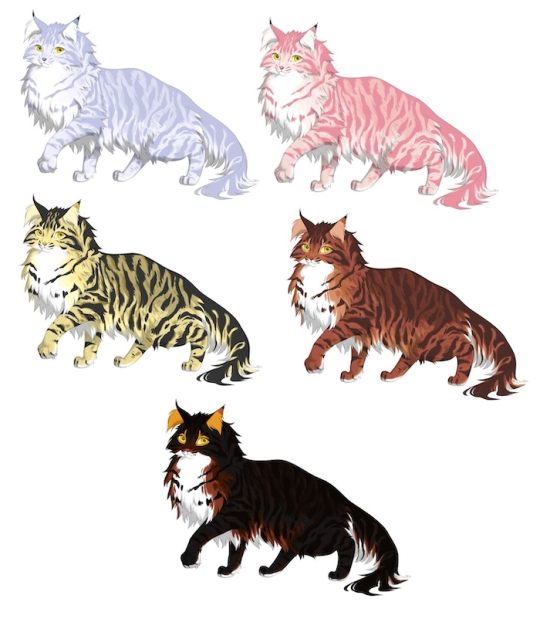
These color experiments aren't final, and may be subject to palette changes. But they're a start with the new direction.
All the colors will all be getting upgrades to accommodate this new style of rendering. And the genes, well, will be re-rendered following the direction seen here! My goal is to more realistically be able to represent what an average cat looks like—as this looks much closer to your average mackerel tabby—and to open the door for some real beautiful mythical renderings (starry pattern...?) I’d prefer if a randomly generated cat was, on average, something that’s nice to look at – so it’s my goal to try to push and guide the art and gene system in this direction!
I also want to establish more aesthetic synergy with the customization, giving users gene options to customize smaller aspects, such as the skin color or the ear fluff color, while not being overwhelming (or requiring too many color slots for breeding.) I want to design it so that you essentially can't get an "unusable" color combination. Not too little customization, and not too much as to be overwhelming, confusing, or difficult to breed with.
Doing so will also open the door for potentially a larger color wheel, as our wheel still lacks. The original intention behind a smaller wheel was to allow for getting a "good" color combination easily, but I believe the solution to a problem like that is to retackle the different areas of customization.
So, hold out for that!
It's also worth noting that our developers have figured out the "colored shading" problem, allowing for us to make the current plain black shading tinted based on the color it sits above. The next update to the generator should include this colored shading! More on the state of the generator available below...
New UI/UX Direction Preview #1 - The Camp
Let’s face it, the old displays and mockups shared here may have been passable, but they were rudimentary and amateur. I did them on my own, but they were no way up to speed with the demands of web design. As intended, the development team has been expanded. I’ve been working with a seasoned UI/UX designer to develop and improve upon the mechanics we originally conceptualized, and to adapt my original design intentions.
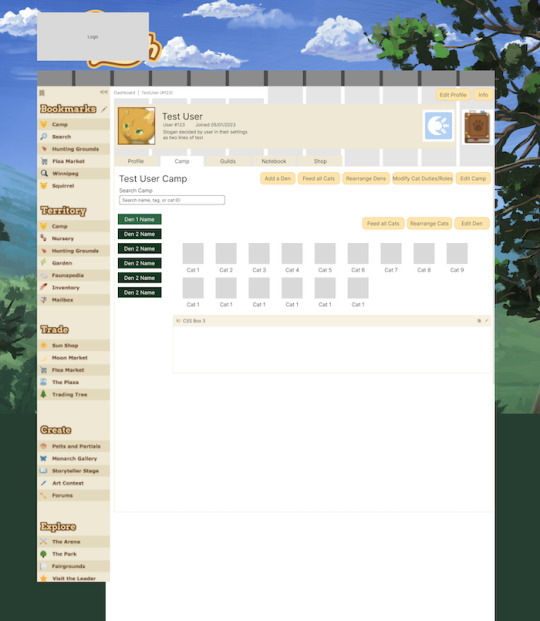
Everything is subject to change as we move forward, and of course this is low fidelity (please excuse the work-in-progress nature!) But it gives a new concrete direction for where elements will be placed. Everything will also be formatted competently for mobile.
New UI/UX Direction Preview #2 - Cat Profile

Once again, low fidelity! There are still some aspects which need workshopping, such as the formatting for the text in the heritage and traits boxes, and we may experiment with the margins and spacing of each element, but the goal was to create a much cleaner web view, and we're getting there!
New UI/UX Direction Preview #3 - Cat Generator
This is the biggest change that I am workshopping right now. An experienced consultant on our team pointed out that dropdowns, while popular within our genre, are difficult for users on average. They’re outdated, and they’re harder for accessibility, intuitive design, and user flow. We have gotten user complaints and requests to help accommodate the dropdowns in the past, but why not make the whole process easier?
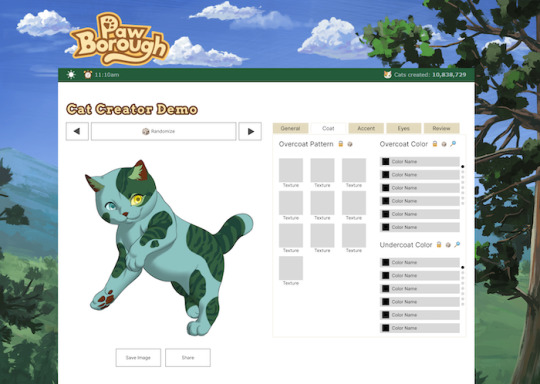
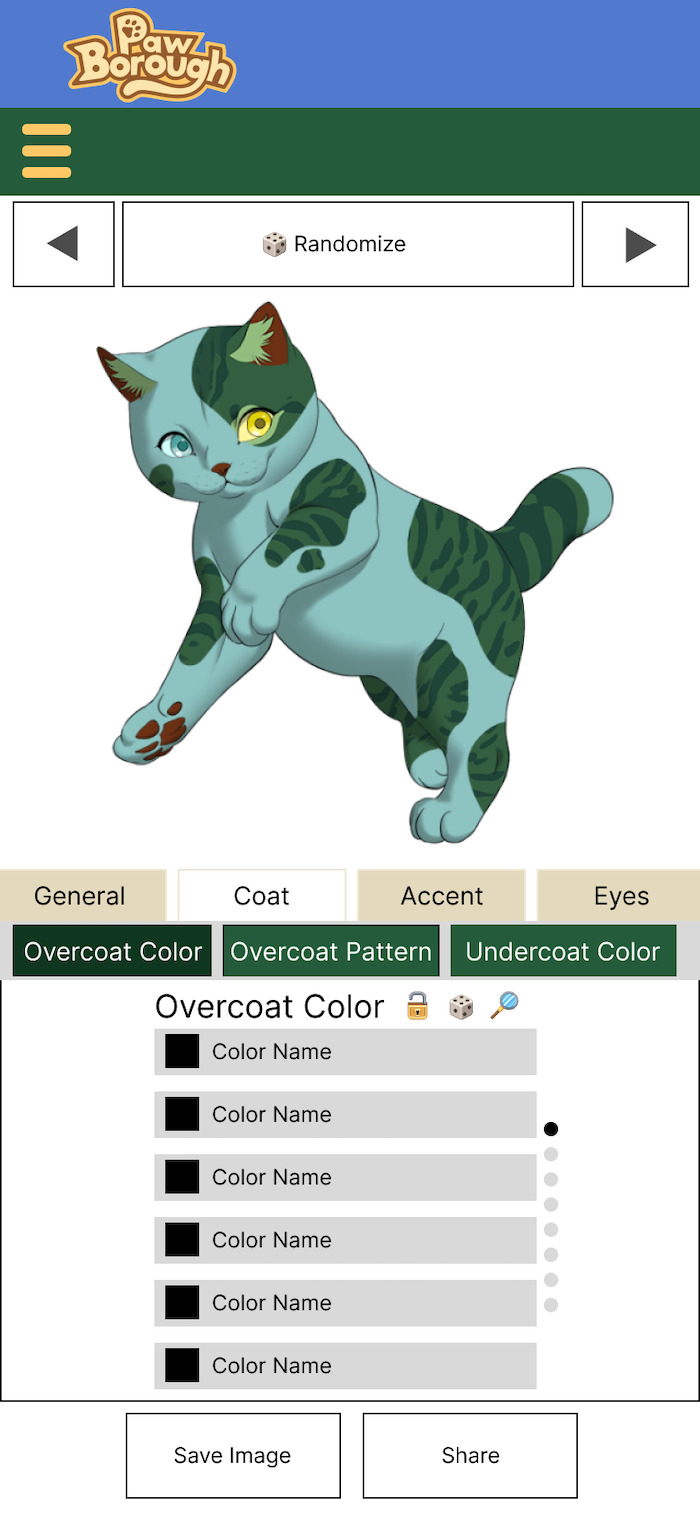
NOTE: The "review" tab will also be added to the mobile layout
The mobile version especially will have to be implemented and tested for design and usability. I'm still back and forth on moving the randomize and history buttons to the top in the web view, but for the mobile view it could not stay below due to being where a user's thumbs often sit, and potentially causing frustration while designing. I wanted to keep some consistency between the mobile and web layouts, and it does seem to mimic a sort of "back button" placement, but what do you as the community think?
As to when the cat generator will be updated: I’ve been wanting to do a big bang of an update with all the breeds that will be available at launch. With this overhaul, it will depend on the speed of artist production.
Other low fidelity mockups are currently being workshopped, including new user onboarding, breeding, and a potential “dashboard” feature for registered users which accommodates completed dailies, site news, and monitoring timers for functions like cooking!
Next, let’s take a look at some art the team has done this month!
Pixels
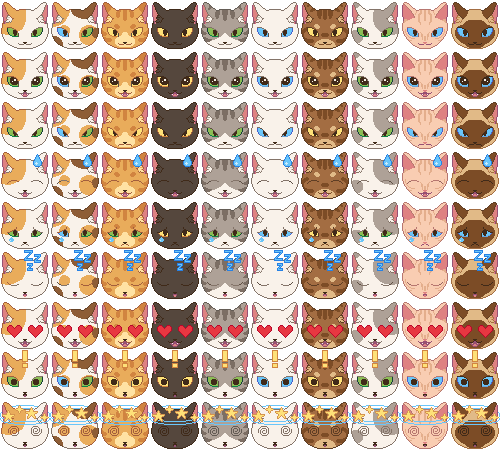

Icons
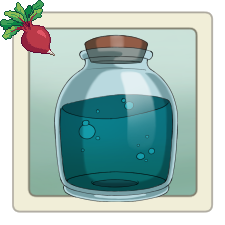

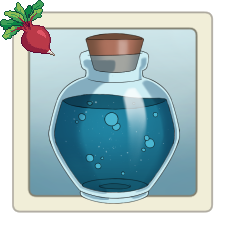

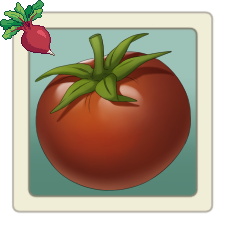
Illustrated by Hybridremmie on Instagram
Work in Progresses
Lastly, let’s look at some sketches this month!
Fauna concept: The Lupiné
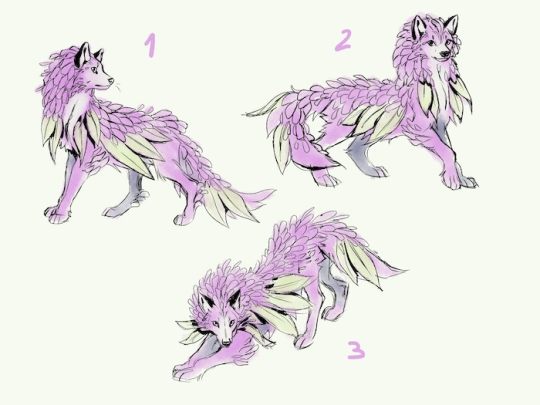
Illustrated by fulemy on Instagram
Backdrops Experiments
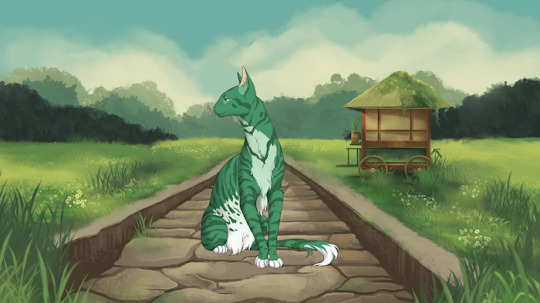

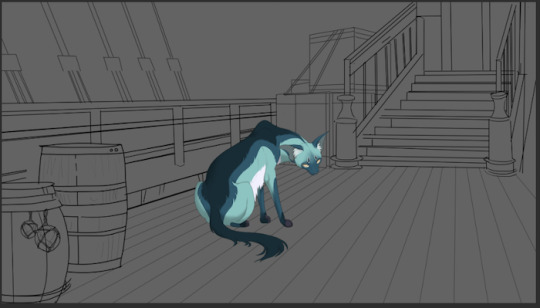
Illustrated by Runeowl on Deviantart / snowfinchstudio on Instagram
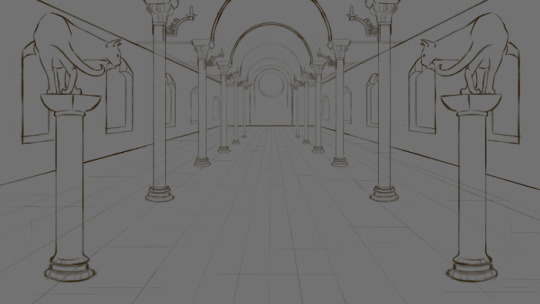
Illustrated by skazinbud on Instagram

Illustrated by hybridremmie on Instagram
Woo, what a big drop! Things have started moving quite quickly, and I’m working day to night with my teammates to develop on schedule and deliver something amazing! So far, despite the setbacks, we are on track. I’ll come back with news on the building process next month.
AS A FINAL NOTE: With art production speeding up, we are working on backer companions/Fauna. This process consists of us emailing backers our concept sketches and waiting for input. Please watch your Kickstarter email if you have backed a design tier!
To Summarize: We shared the beginning of a new direction for genes, low fidelity UX/UI designs for the user’s Camp, the cat profile, and the cat generator. We shared pixel icons, a few rendered icons, and a collection of work in progress sketches!
What to expect next month: Further UI/UX previews, progress on build functionality, further asset renderings.
21 notes
·
View notes
Text
What Are the Costs Associated with Fintech Software Development?

The fintech industry is experiencing exponential growth, driven by advancements in technology and increasing demand for innovative financial solutions. As organizations look to capitalize on this trend, understanding the costs associated with fintech software development becomes crucial. Developing robust and secure applications, especially for fintech payment solutions, requires significant investment in technology, expertise, and compliance measures. This article breaks down the key cost factors involved in fintech software development and how businesses can navigate these expenses effectively.
1. Development Team and Expertise
The development team is one of the most significant cost drivers in fintech software development. Hiring skilled professionals, such as software engineers, UI/UX designers, quality assurance specialists, and project managers, requires a substantial budget. The costs can vary depending on the team’s location, expertise, and experience level. For example:
In-house teams: Employing full-time staff provides better control but comes with recurring costs such as salaries, benefits, and training.
Outsourcing: Hiring external agencies or freelancers can reduce costs, especially if the development team is located in regions with lower labor costs.
2. Technology Stack
The choice of technology stack plays a significant role in the overall development cost. Building secure and scalable fintech payment solutions requires advanced tools, frameworks, and programming languages. Costs include:
Licenses and subscriptions: Some technologies require paid licenses or annual subscriptions.
Infrastructure: Cloud services, databases, and servers are essential for hosting and managing fintech applications.
Integration tools: APIs for payment processing, identity verification, and other functionalities often come with usage fees.
3. Security and Compliance
The fintech industry is heavily regulated, requiring adherence to strict security standards and legal compliance. Implementing these measures adds to the development cost but is essential to avoid potential fines and reputational damage. Key considerations include:
Data encryption: Robust encryption protocols like AES-256 to protect sensitive data.
Compliance certifications: Obtaining certifications such as PCI DSS, GDPR, and ISO/IEC 27001 can be costly but are mandatory for operating in many regions.
Security audits: Regular penetration testing and vulnerability assessments are necessary to ensure application security.
4. Customization and Features
The complexity of the application directly impacts the cost. Basic fintech solutions may have limited functionality, while advanced applications require more extensive development efforts. Common features that add to the cost include:
User authentication: Multi-factor authentication (MFA) and biometric verification.
Real-time processing: Handling high volumes of transactions with minimal latency.
Analytics and reporting: Providing users with detailed financial insights and dashboards.
Blockchain integration: Leveraging blockchain for enhanced security and transparency.
5. User Experience (UX) and Design
A seamless and intuitive user interface is critical for customer retention in the fintech industry. Investing in high-quality UI/UX design ensures that users can navigate the platform effortlessly. Costs in this category include:
Prototyping and wireframing.
Usability testing.
Responsive design for compatibility across devices.
6. Maintenance and Updates
Fintech applications require ongoing maintenance to remain secure and functional. Post-launch costs include:
Bug fixes and updates: Addressing issues and releasing new features.
Server costs: Maintaining and scaling infrastructure to accommodate user growth.
Monitoring tools: Real-time monitoring systems to track performance and security.
7. Marketing and Customer Acquisition
Once the fintech solution is developed, promoting it to the target audience incurs additional costs. Marketing strategies such as digital advertising, influencer partnerships, and content marketing require significant investment. Moreover, onboarding users and providing customer support also contribute to the total cost.
8. Geographic Factors
The cost of fintech software development varies significantly based on geographic factors. Development in North America and Western Europe tends to be more expensive compared to regions like Eastern Europe, South Asia, or Latin America. Businesses must weigh the trade-offs between cost savings and access to high-quality talent.
9. Partnering with Technology Providers
Collaborating with established technology providers can reduce development costs while ensuring top-notch quality. For instance, Xettle Technologies offers comprehensive fintech solutions, including secure APIs and compliance-ready tools, enabling businesses to streamline development processes and minimize risks. Partnering with such providers can save time and resources while enhancing the application's reliability.
Cost Estimates
While costs vary depending on the project's complexity, here are rough estimates:
Basic applications: $50,000 to $100,000.
Moderately complex solutions: $100,000 to $250,000.
Highly advanced platforms: $250,000 and above.
These figures include development, security measures, and initial marketing efforts but may rise with added features or broader scope.
Conclusion
Understanding the costs associated with fintech software development is vital for effective budgeting and project planning. From assembling a skilled team to ensuring compliance and security, each component contributes to the total investment. By leveraging advanced tools and partnering with experienced providers like Xettle Technologies, businesses can optimize costs while delivering high-quality fintech payment solutions. The investment, though significant, lays the foundation for long-term success in the competitive fintech industry.
2 notes
·
View notes
Text
I'm exhausted. It's 10pm, I've read 108 pages on university webpage UX design and I have another 142 pages I need to read before tomorrow, and I need to retain it all because I need to be able to get my team all on the same page on a navigation strategy so we can move forward on the project I'm leading that is a month behind. I was hoping this book would have a definitive answer to a complex question that has been a sticking point and it doesn't. I'm still recovering from being ill last week, something is wrong with my foot making it hard to walk, and the percription coupon database ransomware hack means I can't get my mingraine meds unless I pay out of pocket for them because insurence won't cover them. A vandal turned my hose on and walked away and while the county will waive the bill for a leak, they won't for that. So I owe some amount of money that I will not know the extent of for several weeks and despite knowing I can probably pay it, I'm very anxious about it. I need to get my sprinkler system inspected before the end of the month and I still need to hire someone to fix my leaky door and repair the water damage to my ceiling, and I have 3 medical referals I haven't managed to follow through on, and I'm supposed to be dieting to get my cholestrol down but being hungry all day ontop of everything else just makes me want to cry
...ugh and I still need to do my taxes.
10 notes
·
View notes
Text
Game App Development Costs and Essential Features: A Modern Perspective
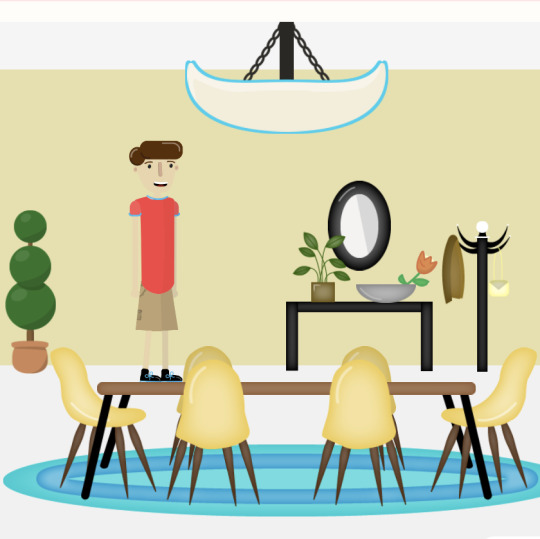
In today's digital entertainment landscape, mobile gaming continues to dominate the app market. With successful titles like House of Hazards showing how casual games can capture massive audiences, many businesses are investing in game app development. Understanding the costs and essential features is crucial for anyone looking to enter this competitive space.
CORE DEVELOPMENT COSTS FOR A GAMING APP
When evaluating the cost of developing a gaming app, several key factors come into play. These include the game's complexity, chosen platform(s), graphics quality, and required features. Let's break down the essential components and their approximate costs.
User Authentication System
Modern games require robust user authentication systems that support:Social media login integrationGuest play optionsProfile creation and customizationCloud save functionalityDevelopment costs typically range from $3,000 to $6,000, depending on the complexity of features implemented.
Game Core Mechanics

Taking House of Hazards as an example, the core gameplay mechanics include:Physics engine implementationCharacter movement systemsObstacle interactionLevel progression logicThis fundamental aspect of development usually costs between $15,000 and $25,000, representing the largest portion of the budget.
Multiplayer Features
Online multiplayer capabilities have become increasingly important:Real-time player matchingLeaderboard systemsFriend lists and social featuresIn-game chat functionalityImplementing these features typically costs $12,000 to $20,000, depending on the scale and complexity.
Monetization Systems
Modern gaming apps require sophisticated monetization features:In-app purchasesVirtual currency systemsAdvertisement integrationPremium content unlocksDevelopment costs for these systems usually range from $8,000 to $15,000.
Level Design System
A robust level design system includes:Level editor toolsProgressive difficulty scalingAchievement systemsTutorial implementationThis typically costs between $10,000 and $18,000 to develop properly.
Graphics and Animation
Visual elements are crucial for success:Character designs and animationsEnvironmental assetsSpecial effectsUI/UX designQuality graphics and animation work can cost between $15,000 and $30,000.
Analytics and Performance Tracking

Essential for game optimization:Player behavior trackingPerformance metricsCrash reportingHeat mappingImplementation costs typically range from $5,000 to $8,000.
CASE STUDY: HOUSE OF HAZARDS
House of Hazards serves as an excellent example of successful casual game development. The game's success can be attributed to several key features:
Intuitive Controls
The game implements simple, responsive controls that make it accessible to players of all skill levels. This type of polished control system typically requires:Extensive playtestingMultiple iteration cyclesPerformance optimization
Progressive Difficulty
The game maintains player engagement through:Carefully balanced difficulty curvesNew mechanic introductionRegular content updates
Social Features
House of Hazards implements social elements that encourage player retention:Competitive leaderboardsFriend challengesSocial media sharing
DEVELOPMENT TIMELINE AND PROCESS
A typical game app development process includes:1. Pre-production (1-2 months)Concept developmentMarket researchTechnical specificationProject planningProduction (4-6 months)Core mechanics developmentAsset creationFeature implementationInitial testingPost-production (2-3 months)Beta testingPerformance optimizationBug fixingLaunch preparation
ONGOING MAINTENANCE AND UPDATES
Successful games require continuous support:Regular content updatesBug fixes and optimizationServer maintenanceCommunity managementMonthly maintenance costs typically range from $2,000 to $5,000.
MARKETING AND USER ACQUISITION
A successful launch requires:App store optimization (ASO)Social media marketingInfluencer partnershipsPaid advertising campaignsMarketing budgets typically start at $10,000 and can scale significantly based on target markets.
CONCLUSION
The total cost for developing a quality gaming app similar to House of Hazards typically ranges from $80,000 to $150,000, with additional ongoing costs for maintenance and marketing. Success in the mobile gaming market requires not just initial development investment, but also a long-term commitment to updates, community engagement, and marketing efforts.The key to success lies in creating a balanced combination of engaging gameplay, polished user experience, and effective monetization strategies. House of Hazards demonstrates that with the right feature set and execution, casual games can achieve significant market success and player engagement.Remember that these costs can vary significantly based on factors such as development team location, specific feature requirements, and overall project scope. It's essential to carefully plan the development process and allocate resources appropriately to maximize the chances of success in the competitive mobile gaming market.
2 notes
·
View notes
Text
Transforming Digital Landscapes: The Excellence of Corusview IT Services.
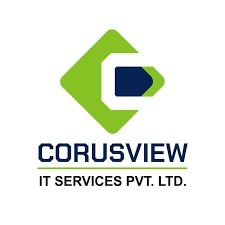
In today's fast-paced digital world, having a reliable and innovative technology partner is crucial for businesses aiming to stay ahead. Corusview IT Services, a leading web development company, stands out by offering top-tier software, web and mobile application development services. With a commitment to quality, reliability, and global reach, Corusview IT Services ensures that clients receive exceptional value for their investments.
In the ever-evolving digital landscape, businesses often face a myriad of challenges when it comes to web, mobile, and software development. Navigating these hurdles can be daunting, but the right technology partner can turn these challenges into opportunities.
Common challenges in Digital development:
Complexity and integration challenges
Web Development: Building dynamic, responsive, and user-friendly websites that effortlessly integrate with existing systems can be quite intricate.
Mobile Development: Creating mobile applications that function seamlessly across various devices and platforms while delivering an excellent user experience poses a significant challenge.
Software Development: Developing custom software solutions that need to integrate with multiple other applications and databases often results in compatibility issues.
Staying current with technology
The fast-paced nature of technological advancements makes it challenging for businesses to remain up-to-date with the latest trends and tools.
Ensuring digital solutions are scalable and future-proof demands continuous investment and specialized expertise.
User experience and design
Developing an intuitive and engaging user experience is essential for the success of any digital product.
Subpar design and usability can result in low user engagement and satisfaction.
Security and compliance
Maintaining the security of digital solutions and adhering to regulatory requirements is a critical concern. Data breaches and security vulnerabilities can have significant consequences for businesses.
How Corusview IT Services can assist:
Corusview IT Services provides a broad range of solutions specifically crafted to tackle these challenges and support businesses in thriving within the digital landscape.
Expert web development
Custom web development: Tailored solutions crafted to fit your unique business requirements.
Content Management Systems (CMS): User-friendly systems that simplify website updates and maintenance.
Cutting-Edge Mobile App Development
Mobile App Creation: Bespoke apps designed to meet the needs of diverse industries.
Cross-Platform Solutions: Strategies that extend your app’s reach and boost its effectiveness across different platforms.
Ongoing Updates and Support: Regular enhancements and maintenance to keep your app fresh, secure, and up-to-date.
User-centric designs
UX and UI Innovation: Creating immersive and visually appealing designs tailored to enhance user interaction.
Prototyping and Usability Testing: Developing and refining prototypes to ensure optimal functionality and user satisfaction.
Ongoing Enhancement: Continuously evolving designs based on user feedback to maintain relevance and effectiveness.
Pioneering Technology and Innovation
Forefront of technological advancements, embracing the latest innovations to deliver state-of-the-art solutions.
Cutting-edge technology ensures your digital products are not only scalable and future-ready but also perfectly in tune with the latest market trends.
Rigorous Quality Assurance:
Implementing comprehensive quality assurance processes to ensure that every solution meets the highest standards of performance and reliability.
At Corusview IT Services, we’re dedicated to helping businesses tackle digital development challenges and achieve their ambitions. Whether you need a cutting-edge website, a bespoke software solution, or a trailblazing mobile app, our skilled team is here to provide top-notch results.
Elevate your digital game with us and witness the transformative power of our solutions. Learn more about how we can boost your company’s digital presence by visiting www.corusview.com.
#it services#technology#web development#mobile development#software development#software development company#web app development#mobile application development#digital marketing#services
4 notes
·
View notes